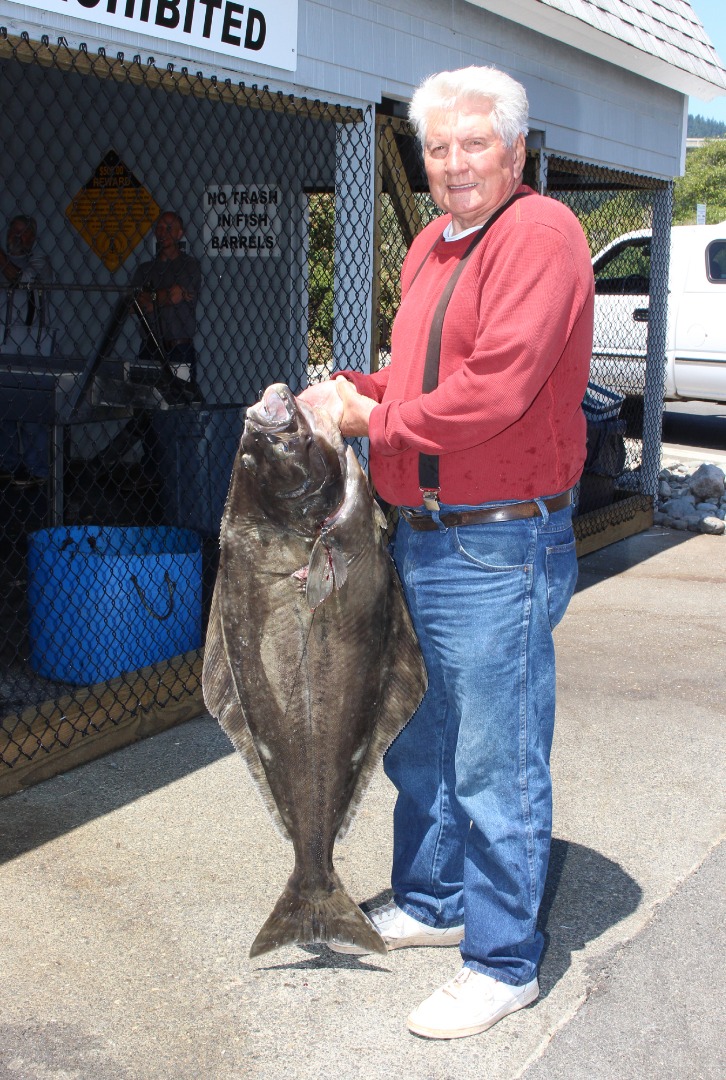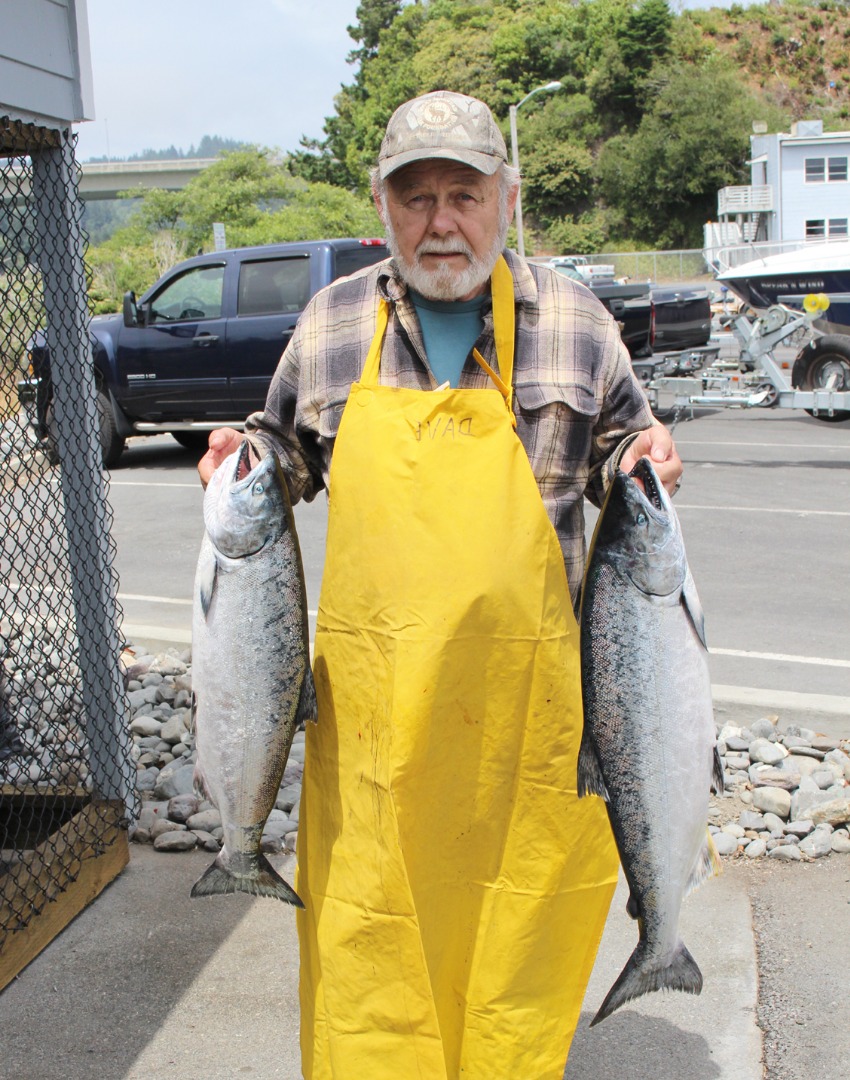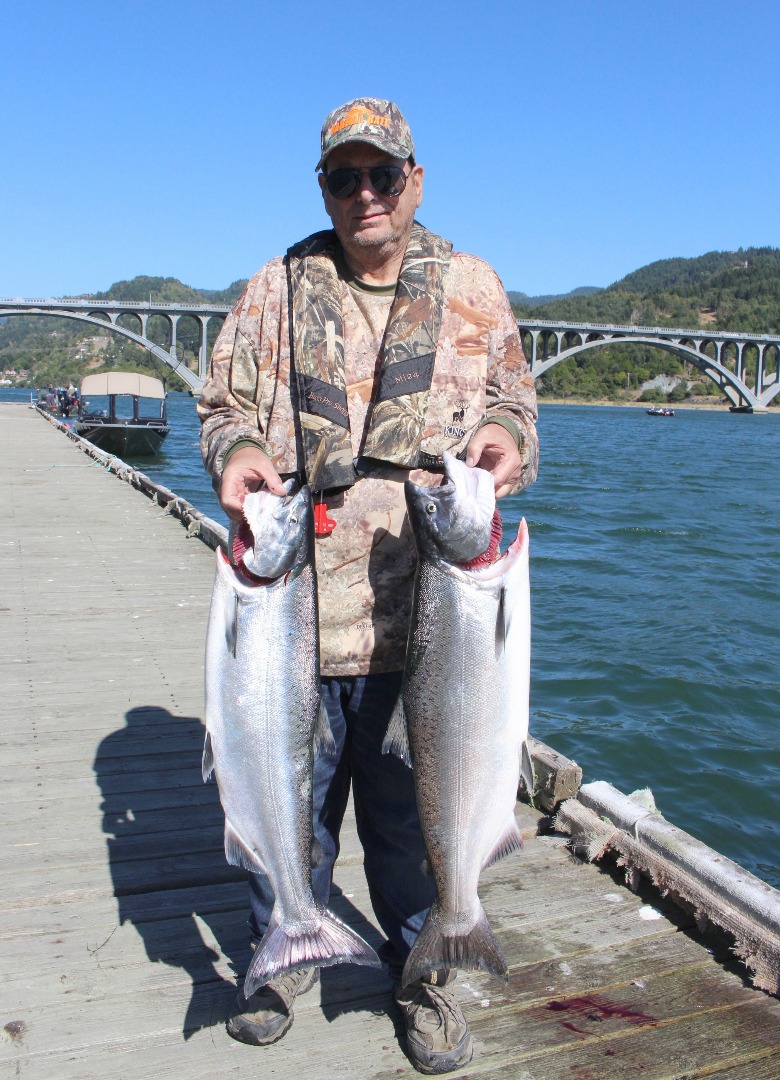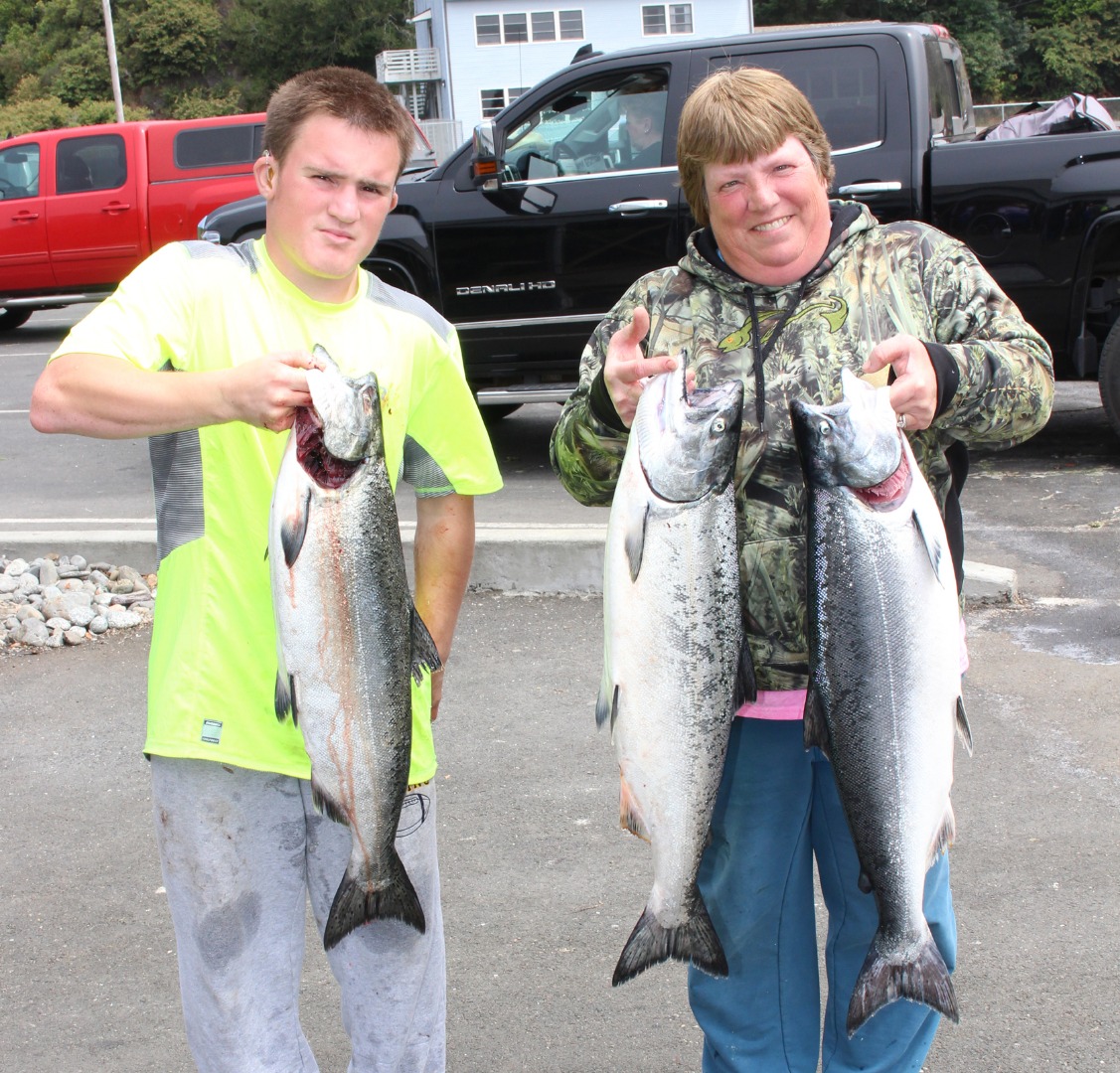Saltwater Fish Report for 7-21-2018
Salmon Bite Full-On in the Rogue Bay
Rogue Bay - Gold Beach, OR (Curry County)

by Larry Ellis
7-21-2018
Website
It's only just gotten started and already people are saying that Chinook fishing in the Rogue bay is approaching days of yesteryear.
When I say that folks have been limiting out on Chinook, that is an understatement that needs to be qualified. In the Rogue bay, it's all about the tide.
During certain phases of the tide cycle, Chinook tend to bite the strongest, and if you are fishing during those specific parts of the tide, you're going to get bit if your line and bait is in the water.
In between those times can be a little iffy, so my best advice when trolling the Rogue bay is to be dragging your anchovy every minute of the day, from sunup to sundown. At some point during these tide cycles, there will be stellar bite periods that can be off-the-chart and totally white hot.
So first of all, two must-have items on your boat are a tide book and a watch.
Take last Wednesday for example.
Guide Jack Hanson gave me a call after the outgoing tide and said that he didn't want to miss the incoming tide. I hopped in his truck and we were Rogue bay bound.
We did, as he said, miss the outflow bite. During the outflow, there was a very strong Chinook bite. Many quick limits of fat Rogue bay Chinook were brought to the boat during that period of time, but we expected that to happen, so we geared up for the incoming tide, one of the best times to fish the Rogue bay.
During this incoming tide period, you want to fish your baits as if every cast counted. During this time, we saw plenty of hookups and we knew that at some point, one of our rods was going to be bent double by a savage take-down.
Toward middle afternoon incoming tide, the seas parted, so to speak, and I was going one-on-one with a Rogue bay Chinook. Within the next hour or so, two more large Rogue bay kings met the soft spot of Jack's homemade Louisville Slugger.
You want to know how Jack rigs up? Here's the skinny on hooking up with a fat Rogue bay Chinook.
First, load up your reel with 25-pound Ultragreen mainline.
Now take the end of your mainline and run it through a Glide-O Sliding Spreader. You can slide a 6mm bead up your mainline now, but Jack likes to keep thing simple, so he ties his mainline directly to a 6-bead bead chain swivel.
Now here's the most important part. Make sure to tie another 8-inch piece of 30-pound monofilament from the end of the bead chain to another 6-bead bead chain swivel. This will prevent line twist from your rapidly-spinning anchovy and spinner blade.
It's really important not to use metal snaps to attach the bead chains together. Tie them by hand and you'll be grand.
Now, a lot of people will argue that the second bead chain should be one-third to one-half of the way down your leader (which we haven't spoken about yet). But I've used this rigging on hundreds of leaders and never have I encountered line twist! At all; never had it and I never will.
Now at the bottom, the lead line of your Glide-O, you are going to want to tie a short piece of line for your cannonball sinkers. Anglers often argue about the proper length of said lead lines but a 20-inch piece of 15-pound mono will suffice. Tying a metal snap to the end of your lead line will make it easy for you to attach your cannonball sinkers.
How many ounces of sinker should you use? It depends on the strength of the current.
When you are trolling with the current, use less weight than when your trolling against the current. One example would be to use 2-1/2 ounces upriver with the current and then switch to 3-1/2 ounces when your trolling downriver against the current. Let the strength of the tide be your guide. Just be ready to switch the size cannonballs when you change trolling directions.
Your leaders will consist of 30-pound monofilament. 5-feet is the legal limit, so don't exceed 60 inches. This will be a 2-hook rig, where the upper hook will be a size 1 sliding hook and the back hook will be a number 2/0 treble. The rear hook will fit in a loop, usually a perfection loop.
Rigging up is easy and means the difference from being a hero and a zero.
Using a bait threader, push the point of the threader from the anchovy's anus to that it comes out of the baitfish's mouth. Now grab the loop with the notched part of the bait threader and pull the line through the middle of the baitfish so that the loop comes out the baitfish's anus. Attach your treble hook so you don't loose the loop.
Make sure that the upper hook goes from the underside of the baitfish's jaw and out of the skull, the hardest part of the baitfish. Pull the treble hook so that one of its hook points goes into the spine of the baitfish.
Adjust the tension of the anchovy so that it has a slight bend to it and spins tight, just like a drill bit. Now, slip a dental rubber band around the anchovy's gills to close them. Send your rig to the bottom and you're good to go.
You can buy these hot rigs already tied up at Jot's Resort, Lex's Landing and the Rogue Outdoor Store.
The next part is the most important part of all. Put your rod in a holder and don't pick it up until your rod is buried. If you yank on the first bite, you'll farm the fish every time. Only the most experienced of anglers who already have caught hundreds of these salmon can hold their rods with confidence.
Use your rod holders!
Remember, never give up on a salmon, especially when trolling for Rogue bay Chinook.
Tight lines!
Larry Ellis, author, writer, columnist and photographer has had a 50-year passion for fishing in California and Oregon's saltwater and freshwater venues. He is a well-known writer for Oregon, Washington and California Fishing and Hunting News, Northwest Sportsman, California Sportsman and Pacific Coast Sportfishing. He currently writes monthly for Salmon Trout Steelheader Magazine, and is the author of two books, "Plug Fishing for Salmon" and "Buoy 10, the World's Largest Salmon Run." Both books can be bought from Amato Publications (amatobooks.com), Amazon and eBay. Ellis particularly loves living in his hometown of Brookings, Oregon - The heart of salmon country and gateway to fishing paradise.
Photos
More Reports
Rogue Bay Breaks Wide Open- Gold Beach
Rogue River- Lower
7-14-2018
Trying to keep a salmon off your hook in the Rogue bay last week was like telling water not to...... Read More
Bottom Fishing Picks Up as Winds Die Down

7-7-2018
Everybody was wondering when the blustery northwest winds were going to abate. As it turned out, the winds and seas...... Read More

Website Hosting and Design provided by TECK.net

